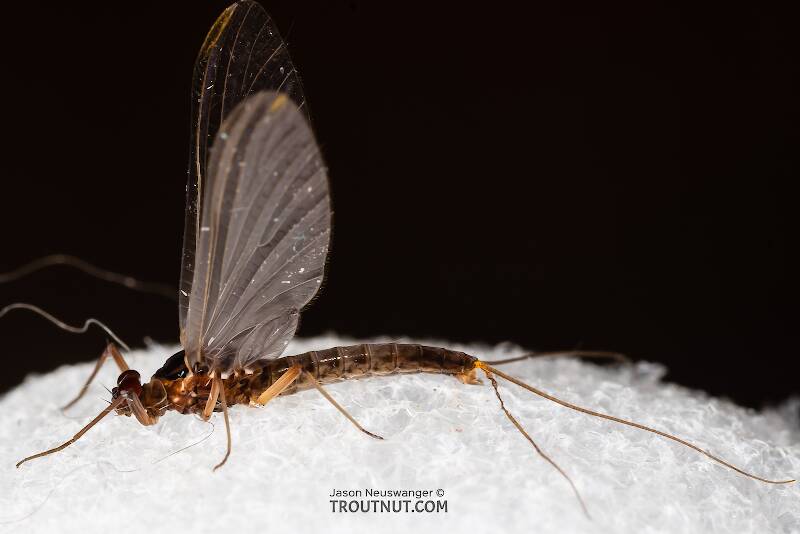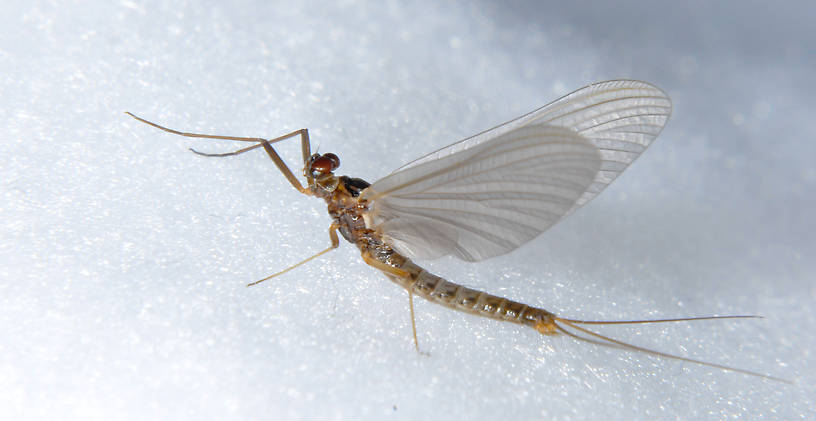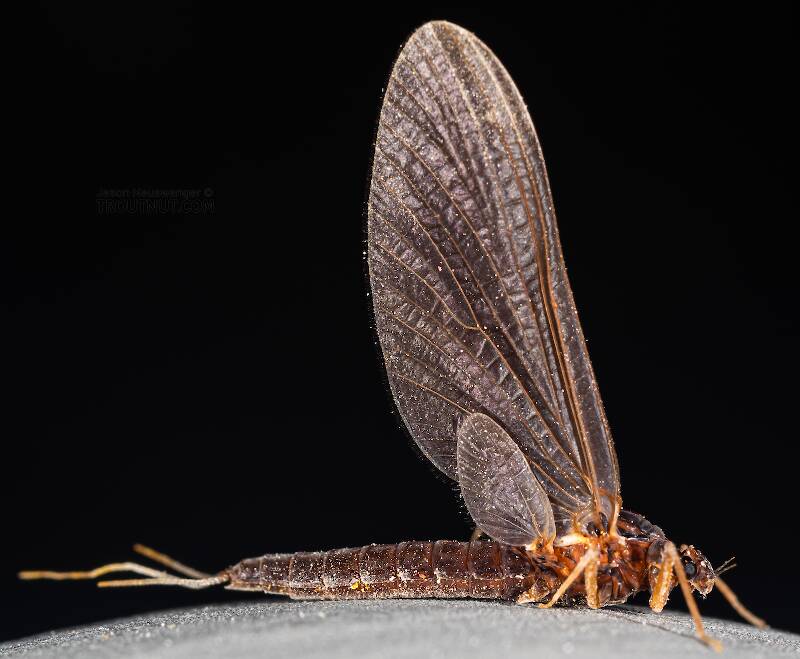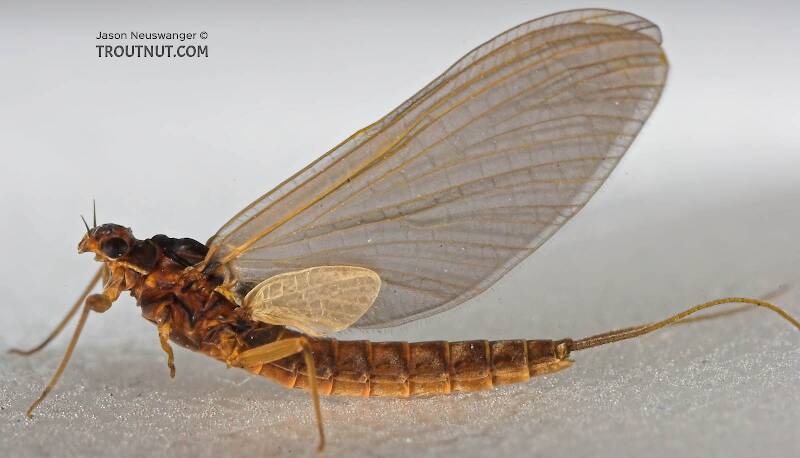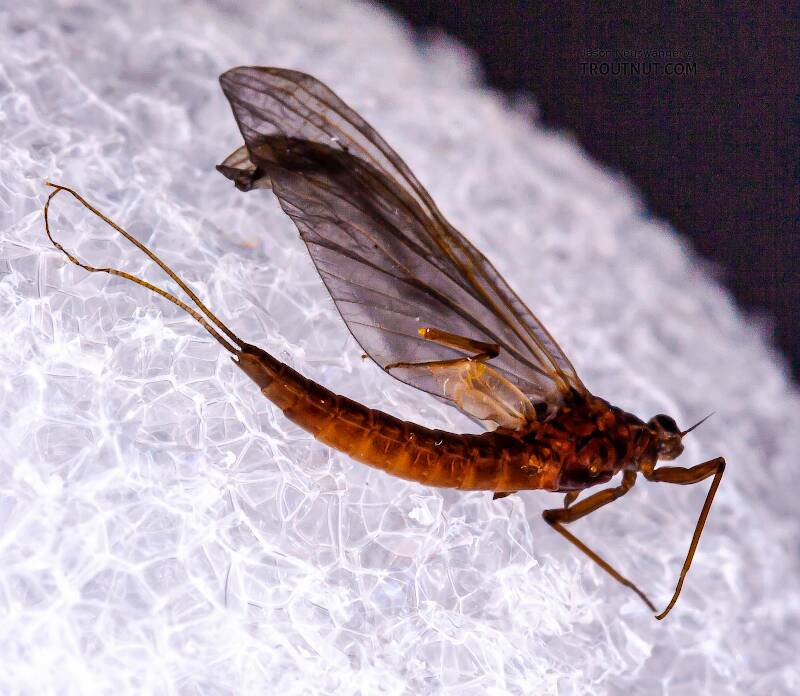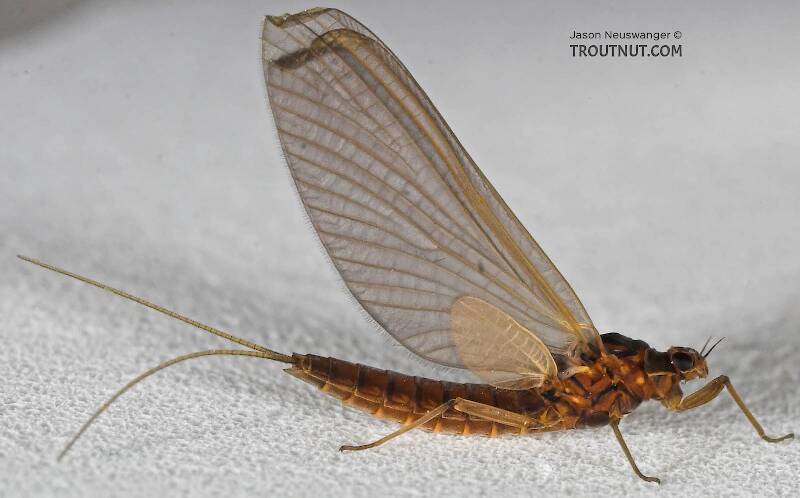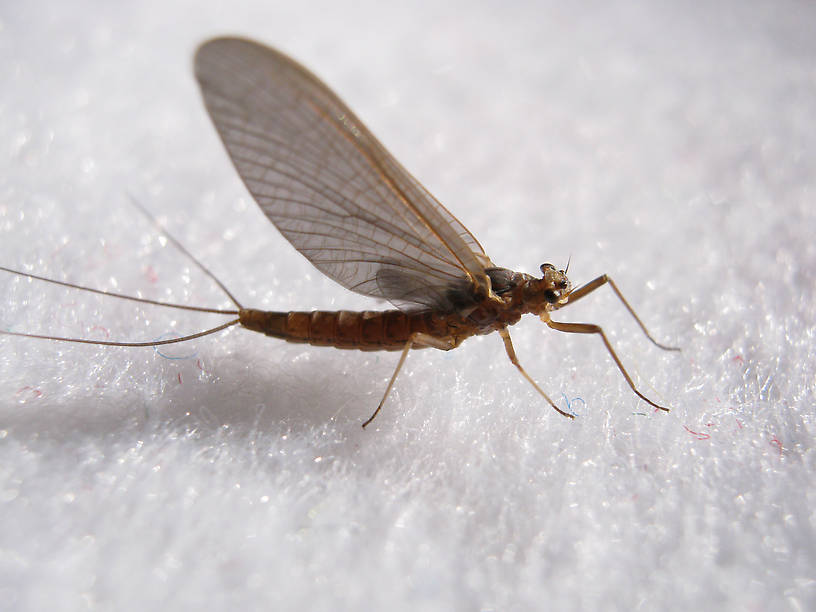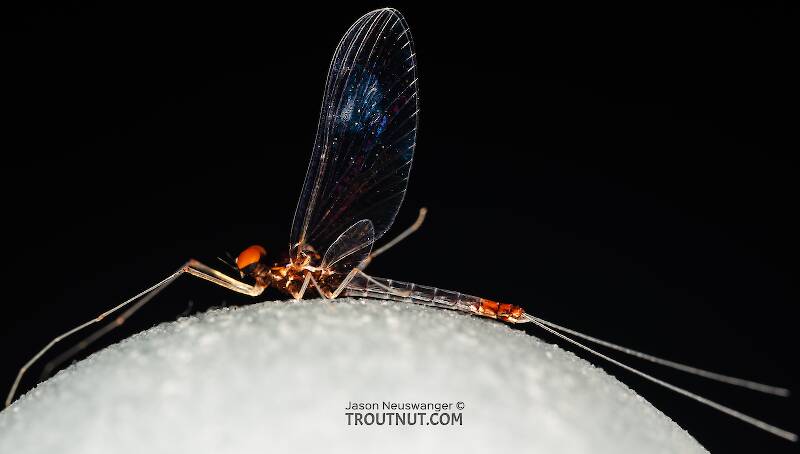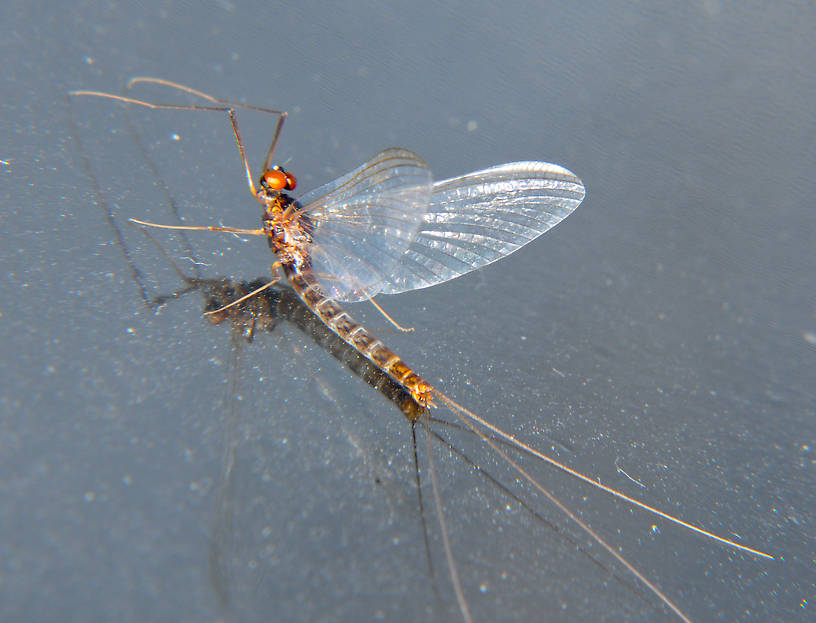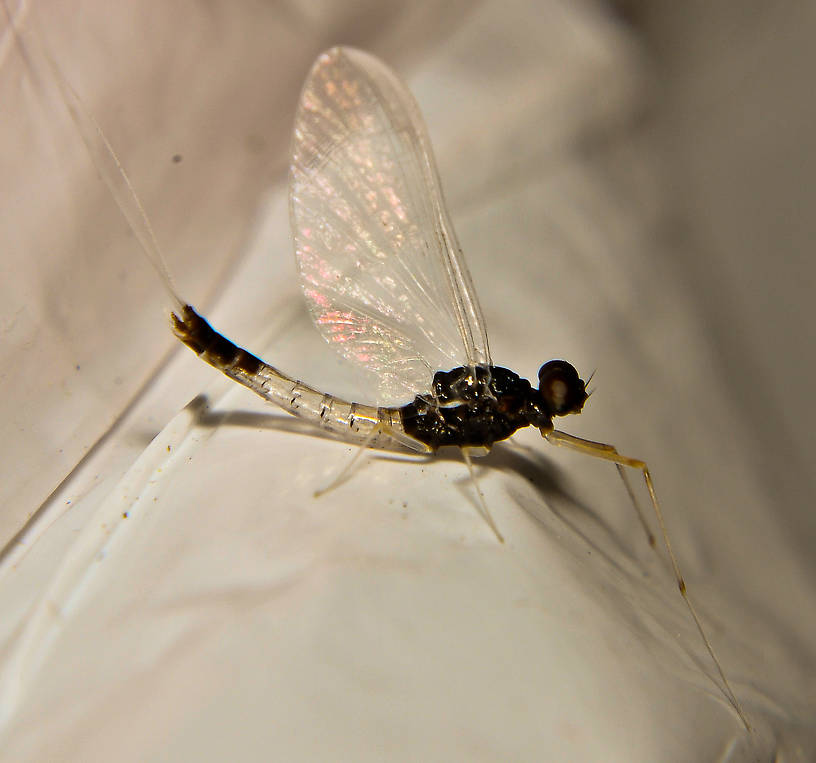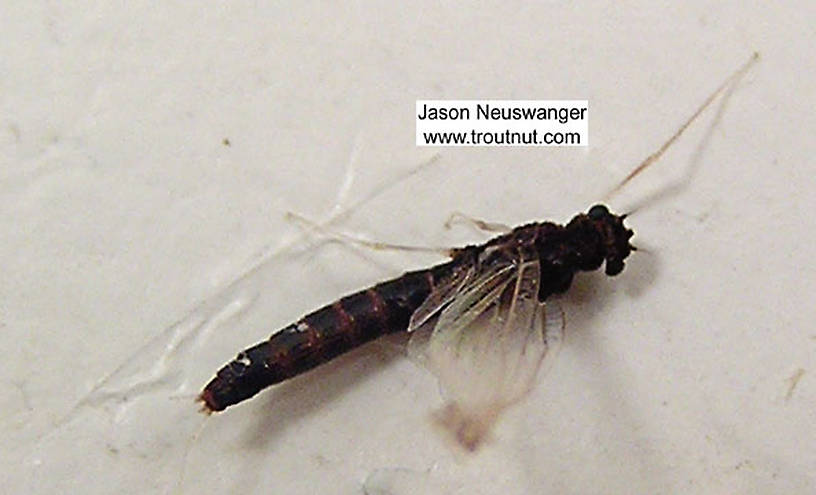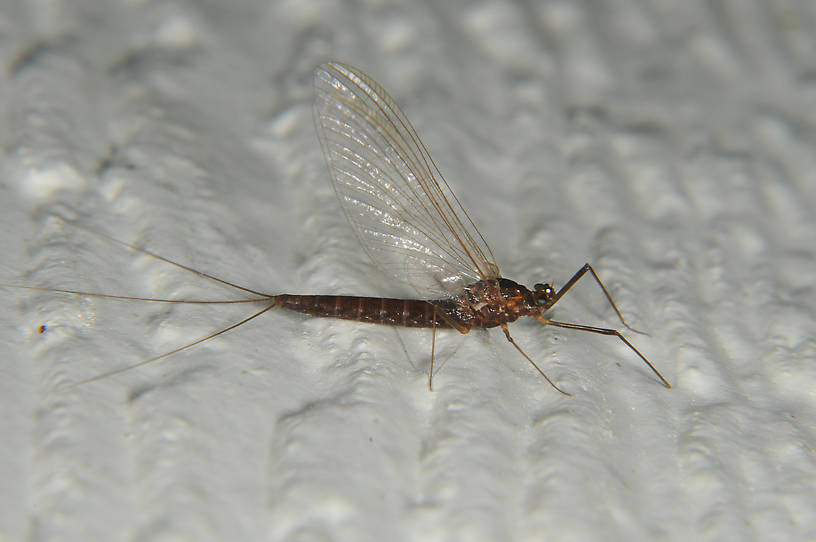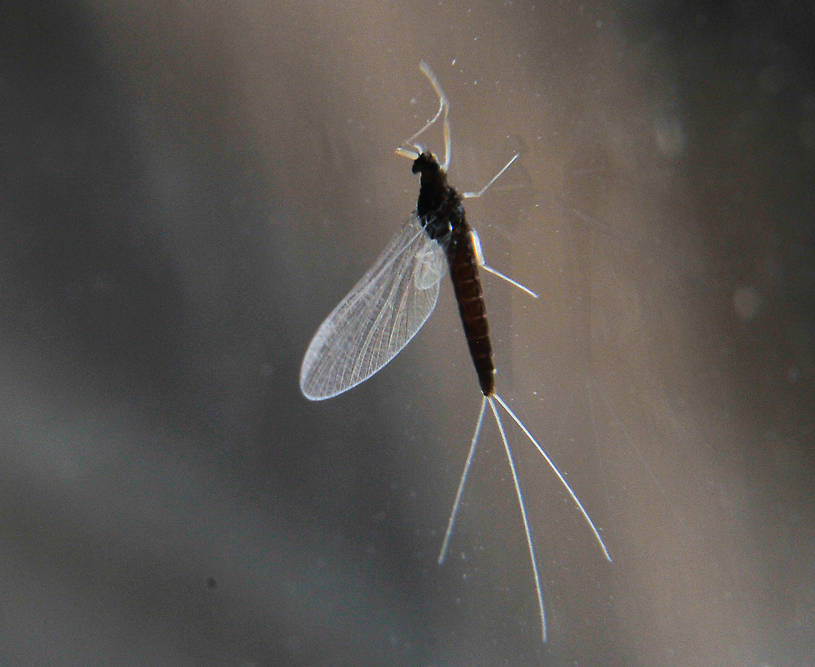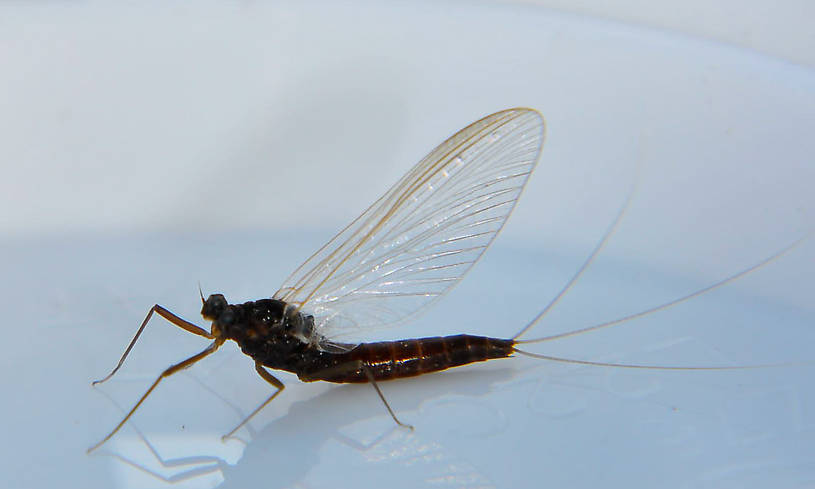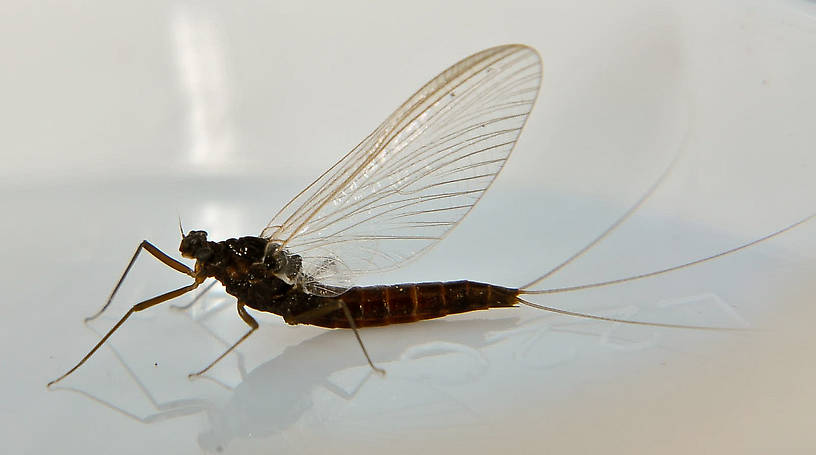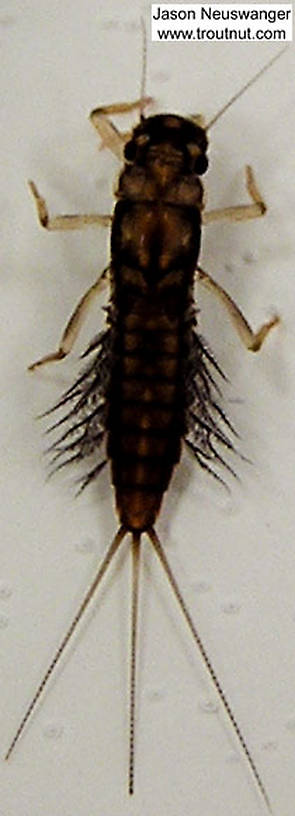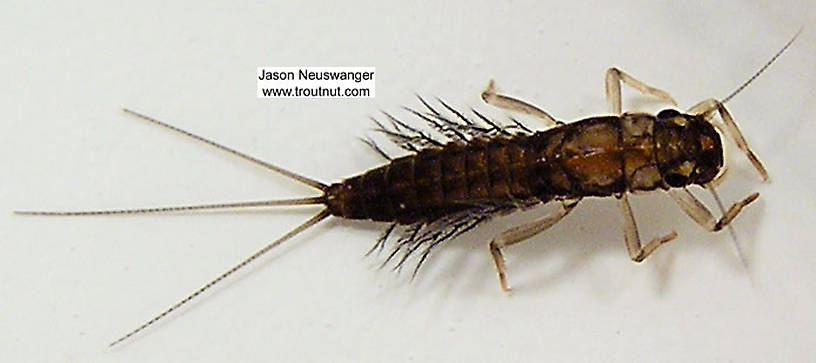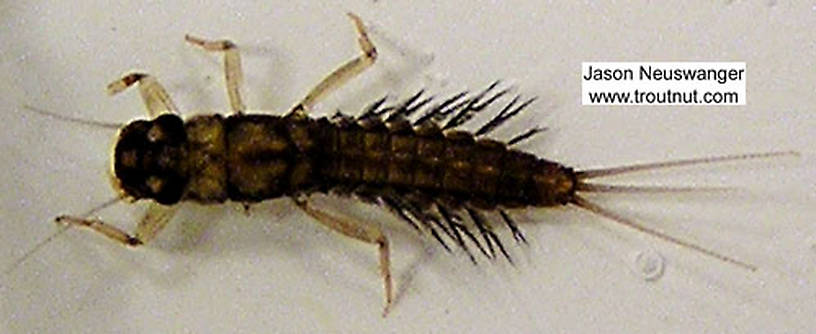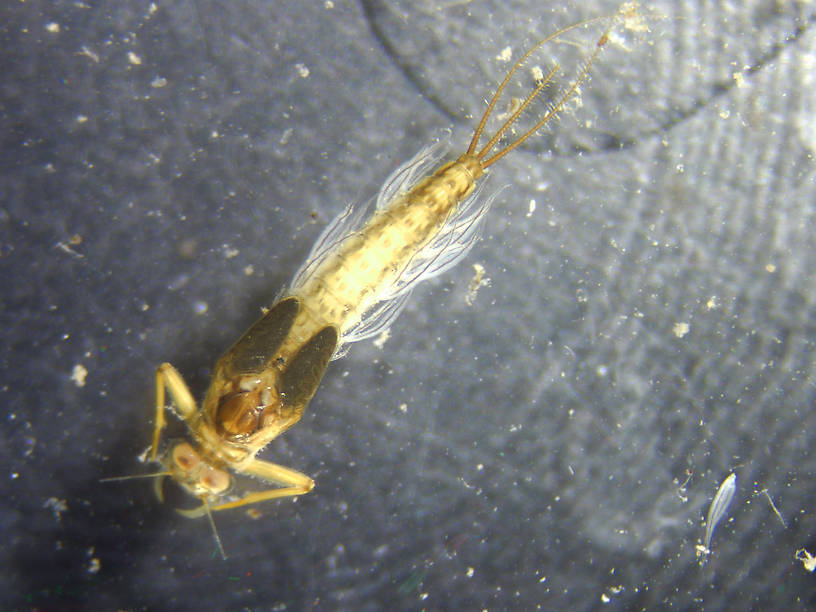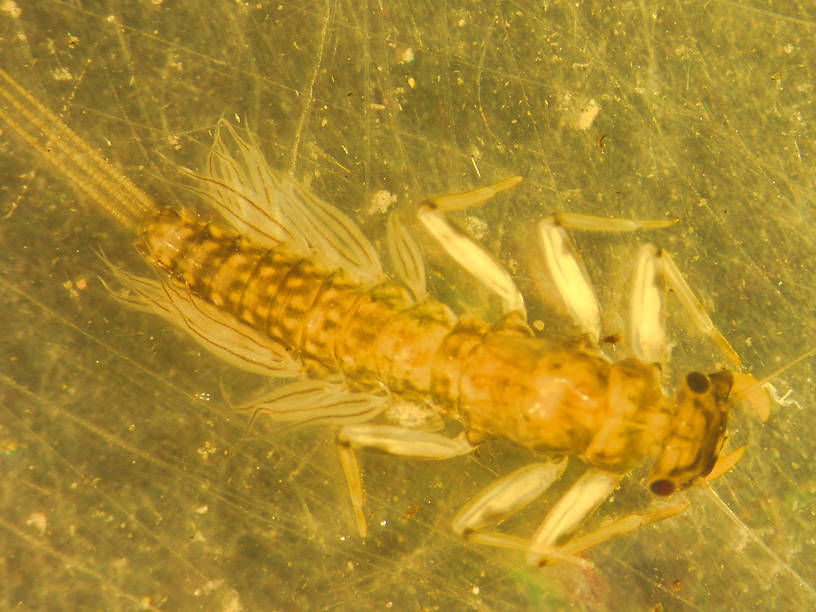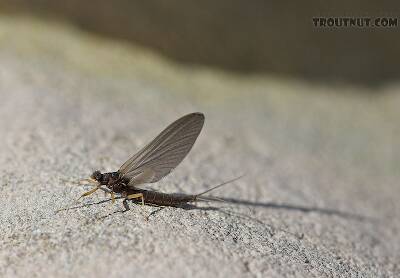
Blue-winged Olives
Baetis
Tiny Baetis mayflies are perhaps the most commonly encountered and imitated by anglers on all American trout streams due to their great abundance, widespread distribution, and trout-friendly emergence habits.
Featured on the forum

Troutnut is a project started in 2003 by salmonid ecologist Jason "Troutnut" Neuswanger to help anglers and
fly tyers unabashedly embrace the entomological side of the sport. Learn more about Troutnut or
support the project for an enhanced experience here.
Mayfly Genus Paraleptophlebia (Blue Quills)
This page only contains pictures of specimens.To read about Paraleptophlebia, visit Page 1.
Missing Parameter Error: Malformed parameter "%2522http:".
Missing Parameter Error: Malformed parameter "%2522".
Specimens of the Mayfly Genus Paraleptophlebia
2 Male Duns
5 Female Duns
4 Male Spinners
5 Female Spinners
5 Nymphs
1 Streamside Picture of Paraleptophlebia Mayflies:
Discussions of Paraleptophlebia
Western Paraleptophlebia
17 replies
Posted by Entoman on Feb 4, 2012
Last reply on Feb 7, 2012 by Entoman
Paul wrote in another topic:
I largely agree, though they seem to be more tolerant of current than most genera of leptophlebiids. I have sampled them from riffles. In my experience (with an admitted western bias), they are far more important in the Fall. If an angler is lucky enough to be in place (and aware of them) when they are schooled up in preparation for hatching, some memorable nymphing can take place! :)
P. adoptiva is an eastern species. By far the most important species in the West is P. debilis, though they can be found mixed with others, particularly the unusual tusk bearing species bicornuta and in some locales packii. Anglers that occasionally come across these tuskers often confuse them with the immature burrowing ephemerids they resemble. Many anglers use their standard nymphs and do just fine with them. The PT is a popular pattern. Sometimes, a nymph that more accurately suggests their silhouette is the ticket. Because of their build and very obvious gills, they look more like a small long-tailed burrower than they do the typical baetid or ephemerellid, and it is good for the angler to keep this in mind.
Most duns and spinners are typically a rich brown, hence the name "Mahogany Dun." They can run the gamut from gray to almost black though, depending on the location. The slender bodies and coloration of the duns lead to them often being mistaken for baetids, but the oval vertically held hind wings and three tails make them easy to distinguish from that family. Check out this link to the hatch page for a look at the natural dun.
http://www.troutnut.com/hatch/752/Mayfly-Paraleptophlebia-debilis-Mahogany-Dun
Below are a couple of patterns I find very useful when this critter is about.
Mahogany Dun Nymph #16

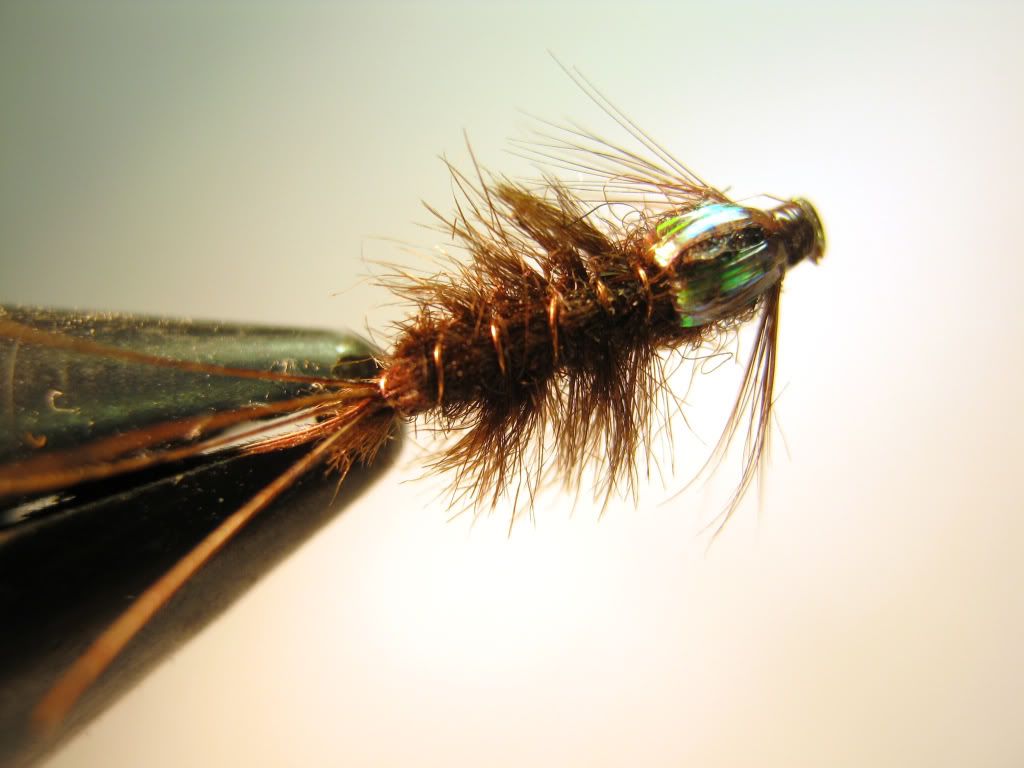
Mahogany Paradun #16

Yes, the Paraleps can come about the same time as the tricaudatus, but don't start as early I think. And I think they were a mid-morning deal where tricaudatus has more of an afternoon peak. (Here in the rockies we're not supoosed to don't have the early P adoptiva, although last spring I found a single youngish nymph that my key would only take it to adoptiva -by gills if I remember right. Wish I'd pickled it and had it properly ID'd.
Anyway, back east I found the Paraleps emerged from slower currents and siltier substrates -often along stream edges. Whereas tricaudatus spilled out of the riffles. They could mix of course in certain places, but one could find one predominant if you wanted to (and I did bc I wanted to know each better), by focusing on key habitat.
Fly patterns could be identical really, although I had my own, esp for the nymphs. In fact, I'm still using some P adoptiva mimic parachutes (more a dun gray) during Baetis activity.
I largely agree, though they seem to be more tolerant of current than most genera of leptophlebiids. I have sampled them from riffles. In my experience (with an admitted western bias), they are far more important in the Fall. If an angler is lucky enough to be in place (and aware of them) when they are schooled up in preparation for hatching, some memorable nymphing can take place! :)
P. adoptiva is an eastern species. By far the most important species in the West is P. debilis, though they can be found mixed with others, particularly the unusual tusk bearing species bicornuta and in some locales packii. Anglers that occasionally come across these tuskers often confuse them with the immature burrowing ephemerids they resemble. Many anglers use their standard nymphs and do just fine with them. The PT is a popular pattern. Sometimes, a nymph that more accurately suggests their silhouette is the ticket. Because of their build and very obvious gills, they look more like a small long-tailed burrower than they do the typical baetid or ephemerellid, and it is good for the angler to keep this in mind.
Most duns and spinners are typically a rich brown, hence the name "Mahogany Dun." They can run the gamut from gray to almost black though, depending on the location. The slender bodies and coloration of the duns lead to them often being mistaken for baetids, but the oval vertically held hind wings and three tails make them easy to distinguish from that family. Check out this link to the hatch page for a look at the natural dun.
http://www.troutnut.com/hatch/752/Mayfly-Paraleptophlebia-debilis-Mahogany-Dun
Below are a couple of patterns I find very useful when this critter is about.
Mahogany Dun Nymph #16


Mahogany Paradun #16

Paralep Hatching Behavior
9 replies
Posted by Shawnny3 on Apr 6, 2009
Last reply on Apr 29, 2009 by Taxon
I can't remember where I read or heard these things (might have been on this site), but I want to make sure my vague recollections are not totally false. When Paraleptophlebia are mating, do they make exaggerated dives in clouds above the stream? If so, do they often end up in the water at these times or do they fall as spinners much later? Finally, when they emerge, do they do so at the stream bottom and then swim to the surface as duns?
Thanks for any help,
Shawn
Thanks for any help,
Shawn
Start a Discussion of Paraleptophlebia
References
- Arbona, Fred Jr. 1989. Mayflies, the Angler, and the Trout. Nick Lyons Books.
- Caucci, Al and Nastasi, Bob. 2004. Hatches II. The Lyons Press.
- Fauceglia, Ted. 2005. Mayflies . Stackpole Books.
- Knopp, Malcolm and Robert Cormier. 1997. Mayflies: An Angler's Study of Trout Water Ephemeroptera . The Lyons Press.
- Leonard, Justin W. and Fannie A. Leonard. 1962. Mayflies of Michigan Trout Streams. Cranbrook Institute of Science.
- Swisher, Doug and Carl Richards. 2000. Selective Trout. The Lyons Press.
Mayfly Genus Paraleptophlebia (Blue Quills)
Taxonomy
Species in Paraleptophlebia
Paraleptophlebia associata
0
0
Paraleptophlebia bicornutaMahogany Duns
5
8
Paraleptophlebia brunneipennis
0
0
Paraleptophlebia californica
0
0
Paraleptophlebia clara
0
0
Paraleptophlebia debilisMahogany Duns
1
3
Paraleptophlebia falcula
0
0
Paraleptophlebia georgiana
0
0
Paraleptophlebia gregalisBlue Quills
0
0
Paraleptophlebia guttataBlue Quills
0
0
Paraleptophlebia helenaMahogany Duns
0
0
Paraleptophlebia moerens
0
0
Paraleptophlebia ontario
0
0
Paraleptophlebia packiiMahogany Duns
0
0
Paraleptophlebia praepeditaMahogany Duns
0
0
Paraleptophlebia rufivenosa
0
0
Paraleptophlebia sculleni
2
23
Paraleptophlebia strigulaBlue Quills
0
0
Paraleptophlebia vaciva
0
0
Paraleptophlebia volitans
0
0
Paraleptophlebia zayante
0
0
Species in Paraleptophlebia: Paraleptophlebia associata, Paraleptophlebia bicornuta, Paraleptophlebia brunneipennis, Paraleptophlebia californica, Paraleptophlebia clara, Paraleptophlebia debilis, Paraleptophlebia falcula, Paraleptophlebia georgiana, Paraleptophlebia gregalis, Paraleptophlebia guttata, Paraleptophlebia helena, Paraleptophlebia moerens, Paraleptophlebia ontario, Paraleptophlebia packii, Paraleptophlebia praepedita, Paraleptophlebia rufivenosa, Paraleptophlebia sculleni, Paraleptophlebia strigula, Paraleptophlebia vaciva, Paraleptophlebia volitans, Paraleptophlebia zayante
11 species (Paraleptophlebia altana, Paraleptophlebia aquilina, Paraleptophlebia cachea, Paraleptophlebia calcarica, Paraleptophlebia jeanae, Paraleptophlebia jenseni, Paraleptophlebia kirchneri, Paraleptophlebia placeri, Paraleptophlebia quisquilia, Paraleptophlebia sticta, and Paraleptophlebia traverae) aren't included.



